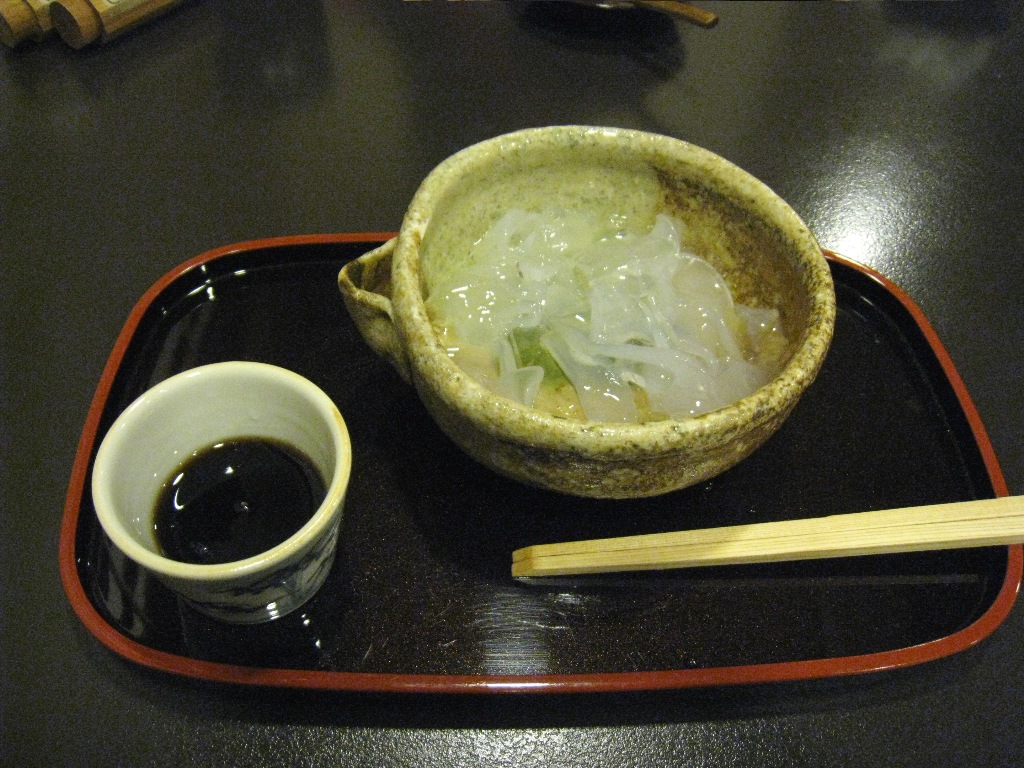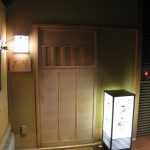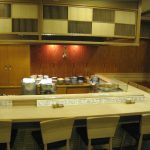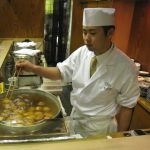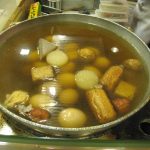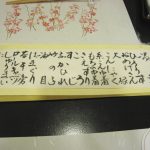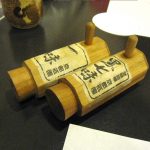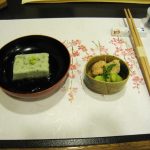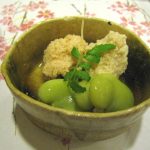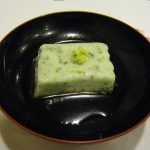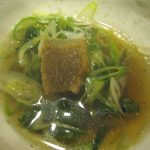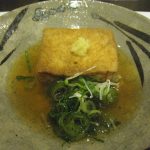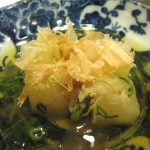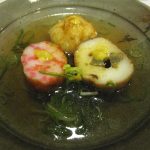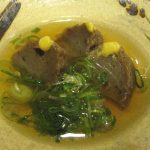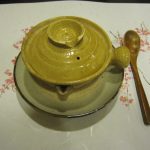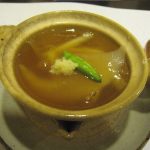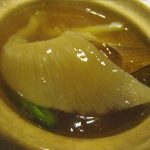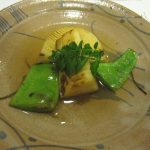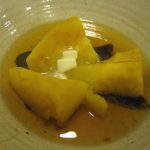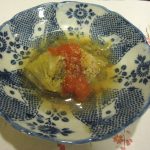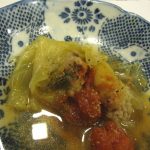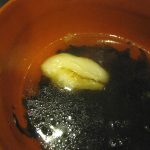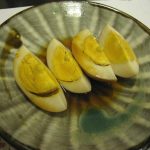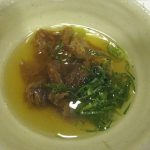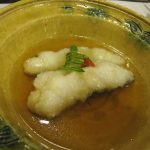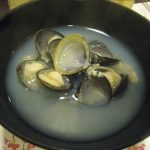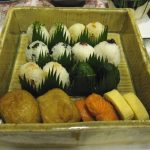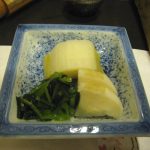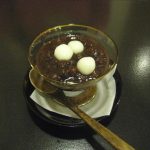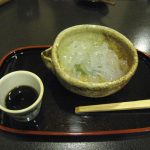CLICK ON THE MAIN PHOTO ABOVE TO VIEW CAPTIONS IN GALLERY FORMAT
Image 1: www.kagaman.co.jp/manu
Closed on Sunday, Golden week, mid-August and Christmas.
Image 2: A small place with some counter seats and tables.
Image 3: Oden is a popular Japanese hot pot dish using a light soy-flavoured dashi as broth, a traditional Japanese stock made from bonito and kelp. Mustard is a typical condiment for oden.
Image 4: It is rather a cheap dish and most Japanese convenience stores would have oden in winter months. But if locals are willing to pay over USD$120 to have oden at this restaurant, there must be something special here (at least that's what we hoped) as they spend 6-8 hours to prepare the broth every morning!
Image 5: Menus are all in Japanese but fortunately one of the chefs there had spent a few years in England. He prepared a standard tasting menu for us for USD$130 per head.
Image 6: Seven Spice. A typical seasoning in Japan.
Image 7: Small treats before the oden.
Image 8: Fava bean with sea bream eggs. The eggs were a bit gritty but we loved the Japanese fresh flavour.
Image 9: Sesame tofu with seasonal herbs. Soft, slightly sticky, very seductive flavour combining with the light soy sauce.
Image 10: Whale tongue, yes whale tongue, in seaweed scallion broth. We were hesitant to eat it as whale is endangered. Oh well, we ate it anyway. The texture was kind of in between cow stomach and sea cucumber but more al dente. It was marinated in a lovely sweet soy sauce. One of the best dishes of the night!
Image 11: Deep fried tofu with ginger. Note that you don't have to finish the soup; otherwise you won't be able to eat much.
Image 12: Daikon with bonito flakes.
SEE FLAKES HERE!
Image 13: Fishball with mustard. The pink stuff were pickled ginger. Even though each dish uses the same dashi broth just like any oden, the chef here varies the condiment and seasoning of each dish in order to complement the ingredients.
Image 14: This one was interesting. Konnyaku, or devil's tongue, is a kind of yam, tasteless but a strong elastic texture! Very popular throughout Japan.
Image 15: You definitely won't find this in standard oden.
Image 16: Shark's fin soup and again, using the same dashi broth but a thicker version.
Image 17: Reasonable portion of fin for the price we paid. However, the soup base was bland, very bland. A bit disappointing! Our experience in Hong Kong was much better.
Image 18: Good crunchy bamboo shoot with kinome, an aromatic herb from leaves of Sansho (equivalent to Sichuan pepper) tree. Wow, this fresh herb dominated this dish with a slight tongue-tickling sensation!
Image 19: Sweet potato with butter. Even though the chef enhanced the soup differently for each dish, it was getting a bit dull.
Image 20: Cabbage with tomato.
Image 21: Stuffed pork inside.
Image 22: Seaweed with a small gummy rice cake
Image 23: Egg boiled in the same dashi broth.
Image 24: This was one of the best items of the meal. A tasty soft tender beef tendon but crunchy in the centre. Brilliantly done.
Image 25: Our last oden dish was a fillet of greenling (Aburame). It had similar texture as conger eel.
Image 26: Finally a rice course starting with a mussel soup.
Image 27: A box of mini onigiri (rice ball) to fill our stomach.
Image 28: Pickles
Image 29: I couldn't wait longer for something sweet after having 12 courses of similar flavour. This is kuzukiri, a chilled gummy noodle with syrup.
Image 30: Our final dish: Zensai, a red bean dessert topped with mochi (rice cake). They also served us a sobacha, a roasted buckwheat tea with strong aroma that resembled sesame.
An expensive meal for oden. Nice to try it once, but definitely not again!





























